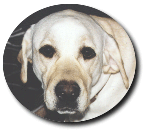

163 Ahuza Street, Raanana, ISRAEL -- Telephone/Fax: (972)-9-7717080

PASSOVER
(Continued)

The Samaritan Passover:
Everyone has at least one unique experience about Passover which he will never forget. For me, it was many years ago when I was invited to attend the Samaritan Passover feast on Mount Grizim, overlooking Nablus.
These were the years before the Intifada, when it was still safe to enter Nablus and to take a semi-ancient Arab bus up the narrow winding road that led to the top of Mount Grizim, long held sacred to the Samaritans. The sun was just setting as we arrived and the Samaritans were everywhere, many of them dressed in white holiday robes.
There are two main groups of Samaritans: the group that resides in Nablus and the surrounding area, and the group that resides in Holon, just south of Tel-Aviv. Passover on Mount Grizim is one of the few occasions when everyone gets together -- something like a huge family reunion.
This was the first time that I had ever seen a Samaritan up close. Actually, they are called Shomronim, because they live in the Shomron, which is the northern half of what outsiders refer to as the West Bank. Despite having lived for centuries among the Arabs, their facial features are definitely not Arab -- definitely more akin to Sephardic Jewish features.
I approached an elderly Samaritan with a white beard, dressed in a white robe. He spoke perfect Biblical Hebrew, the type of Hebrew you hear in Bible class at school but definitely not the modern Hebrew that you hear on the streets of Israel's cities. When he spoke, the order of the nouns and verbs were reversed, the way they are in the Hebrew Bible. He looked and spoke every bit as if he had just stepped out of the Bible.
He explained that they considered themselves to be the only true Jews. They adhered to all the commandments in the Bible, and kept strictly kosher homes. They do not believe in the Talmud, and this then is the source of the ages-old rift. Later he showed me a Samaritan Torah scroll. It was exactly similar to the type of Torah scroll you would see in a synagogue -- except that it was written in the old Hebrew alphabet.
"The Bible commands that not so much as one letter must ever be changed," he explained. "And yet, you went and changed the entire alphabet." He was referring to the Hebrew alphabet in use today.
In his own way, I suppose that he could be correct. The Samaritan Hebrew Bible uses the same alphabet which the original Bible was written in. The writing of the Samaritan Torah scrolls uses the same Old Hebrew alphabet found on the Dead Sea scrolls. For reasons not even I completely understand, they switched over to a different Hebrew alphabet more than 2,000 years ago.
 Next page ...
Next page ...
 Table of Contents
Table of Contents
 Prices
Prices
 Order Form
Order Form






 Next page ...
Next page ... Prices
Prices Order Form
Order Form